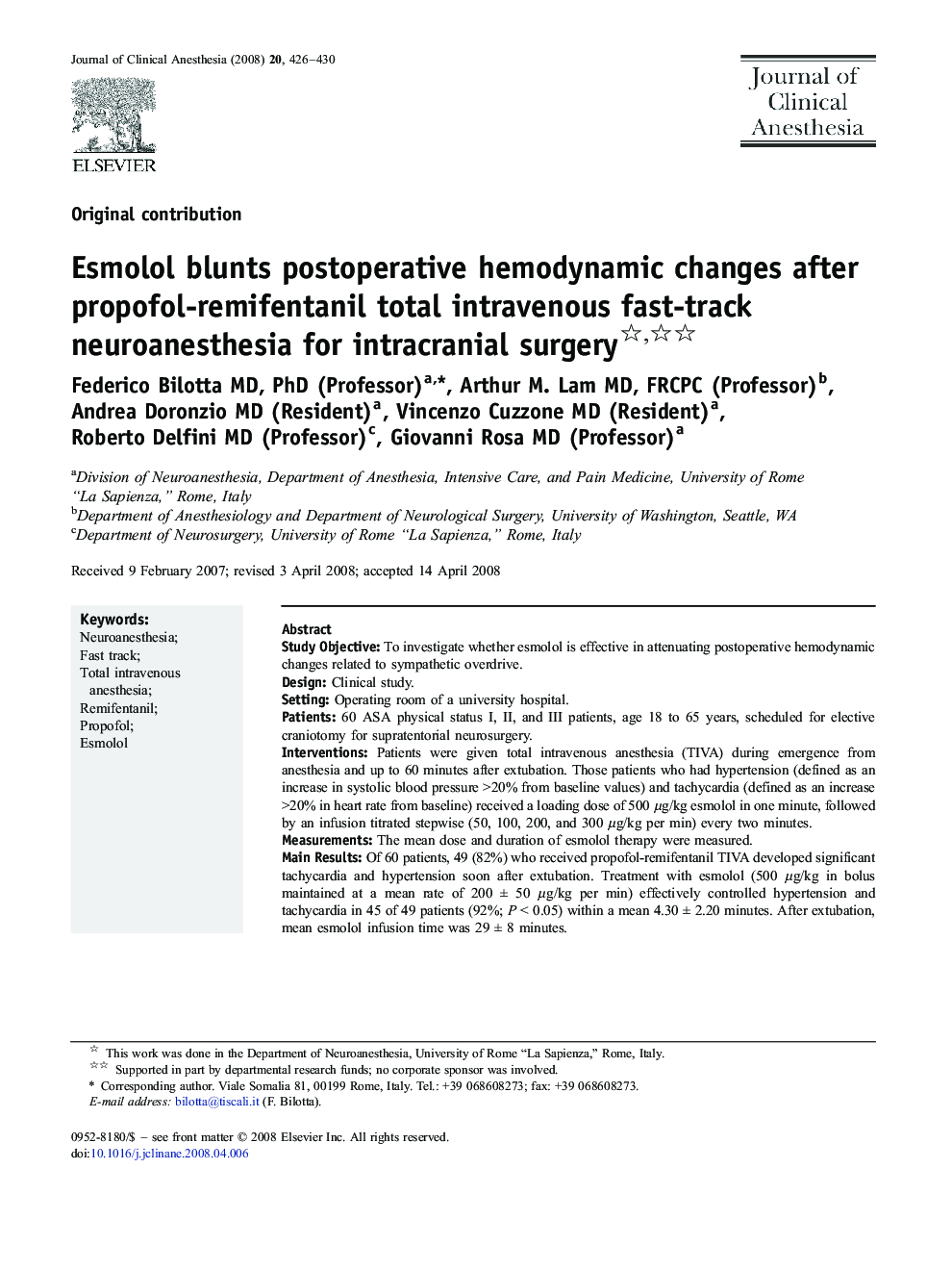| Article ID | Journal | Published Year | Pages | File Type |
|---|---|---|---|---|
| 2764141 | Journal of Clinical Anesthesia | 2008 | 5 Pages |
Study ObjectiveTo investigate whether esmolol is effective in attenuating postoperative hemodynamic changes related to sympathetic overdrive.DesignClinical study.SettingOperating room of a university hospital.Patients60 ASA physical status I, II, and III patients, age 18 to 65 years, scheduled for elective craniotomy for supratentorial neurosurgery.InterventionsPatients were given total intravenous anesthesia (TIVA) during emergence from anesthesia and up to 60 minutes after extubation. Those patients who had hypertension (defined as an increase in systolic blood pressure >20% from baseline values) and tachycardia (defined as an increase >20% in heart rate from baseline) received a loading dose of 500 μg/kg esmolol in one minute, followed by an infusion titrated stepwise (50, 100, 200, and 300 μg/kg per min) every two minutes.MeasurementsThe mean dose and duration of esmolol therapy were measured.Main ResultsOf 60 patients, 49 (82%) who received propofol-remifentanil TIVA developed significant tachycardia and hypertension soon after extubation. Treatment with esmolol (500 μg/kg in bolus maintained at a mean rate of 200 ± 50 μg/kg per min) effectively controlled hypertension and tachycardia in 45 of 49 patients (92%; P < 0.05) within a mean 4.30 ± 2.20 minutes. After extubation, mean esmolol infusion time was 29 ± 8 minutes.ConclusionIn patients undergoing elective neurosurgery with propofol-remifentanil TIVA, a relatively small esmolol dose and short infusion time effectively blunts early postoperative arterial hypertension and tachycardia.
